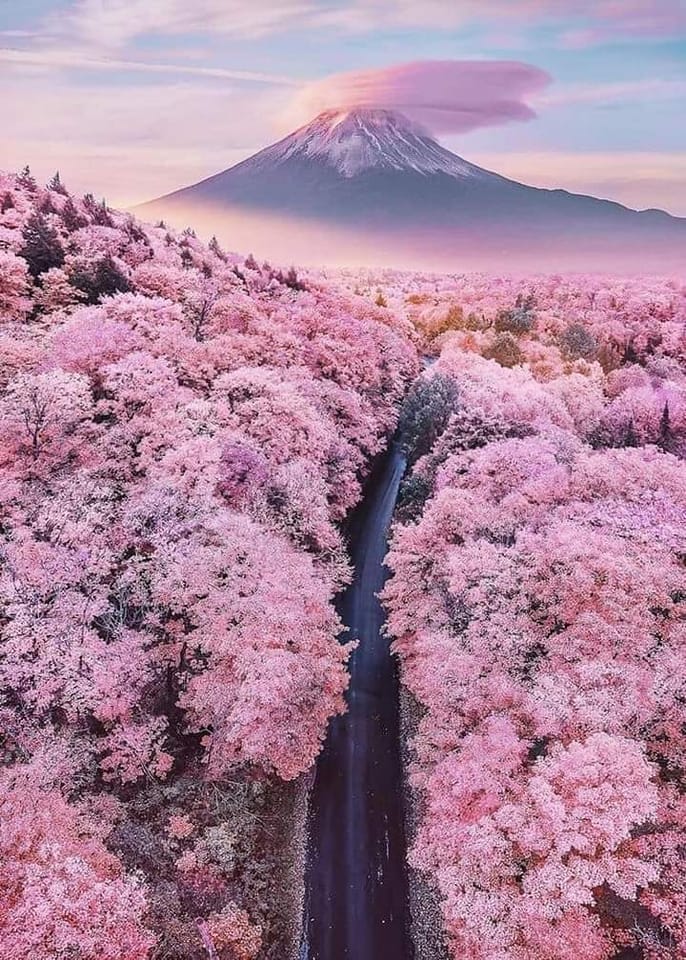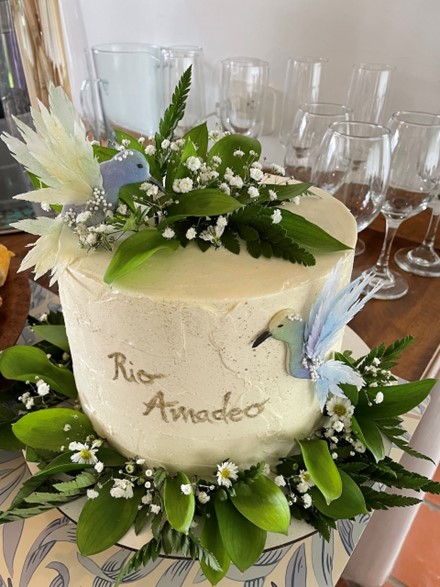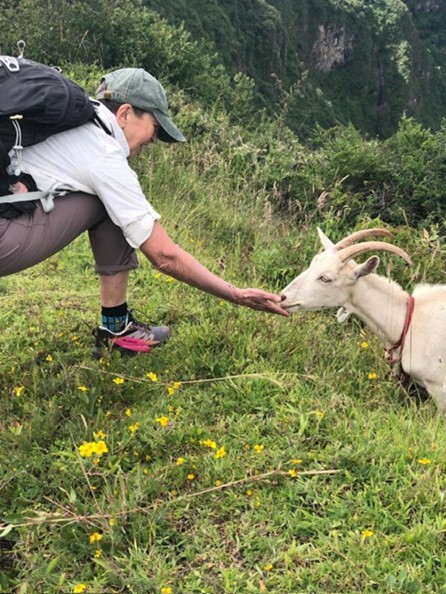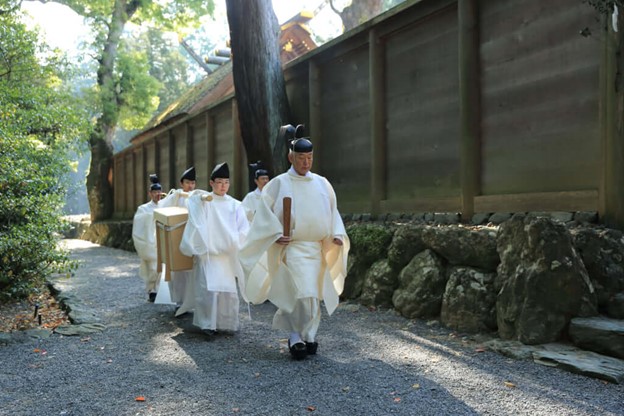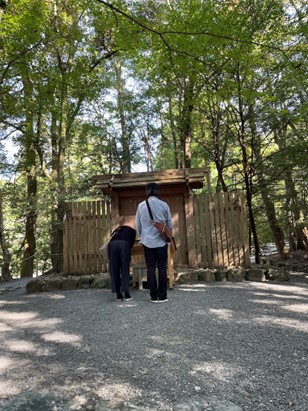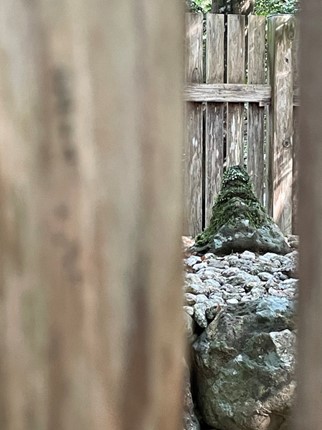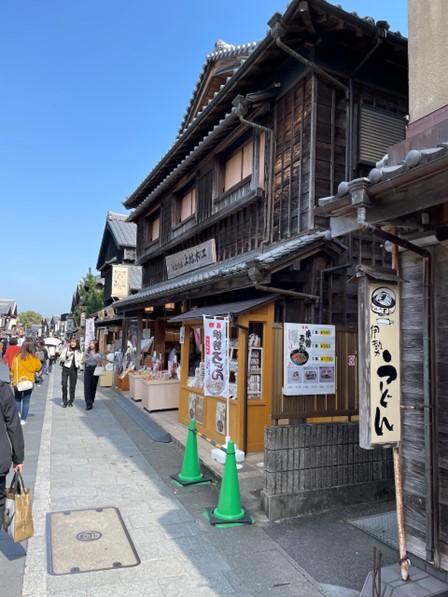Flower Festival
April 8 is celebrated as the Flower Festival or Buddha’s Birthday, called Bathing Buddha Meeting (灌仏会), in northern Buddhist countries (Vesak in southern Buddhist countries). People gather to bathe the baby Buddha with sweet tea to celebrate him as the future awakening being (bodhisattva) and the awakened one (buddha) to save all from suffering.
Siddhatta Gotama saw the suffering of aging, sickness, and death and strove to solve it by sitting still (za-zen), settling in nirvana (no wind, of karma), seeing the Dharma (Law of Dependent Co-origination), and serving and saving all. He found that our suffering comes from our karma, imbued with the triple poisons of desire, divisiveness, and delusion.
He found the solution in stilling karma (of the body, mouth, and mind), reaching nirvana and awakening in the Dharma. He practiced zazen as the fundamental practice to attain nirvana / awakening / prognosis and advised that all attain the same. He devoted his whole life to sharing his awakened way with all to become awakened and to save all from the destruction of the world.
He foresaw the destruction of the world and prognosticated the triple learnings, the four holy truths, the eight holy ways, etc., as practical ways for all to become awakened (buddha) and strive as bodhisattvas to save themselves and the world in holy (wholly wholesome) harmony, health, and happiness. As the doomsday clock is ticking to zero, we all must practice these ways of all and for all.
April 5, 2024 C.E.
Note:
1. Karma is instilled with the triple poisons of desire, divisiveness, and delusion (of ego/mei: I/my). The Buddha said that all living beings are karma-birthed, -heirs, -owners, -machines, and -refuged. He clarified that there is no self-substance with self-sameness (permanent) and self-sovereignty (wishful) entities due to the Dharma (Truth/Law) of all dharmas (phenomena), Dependent Co-origination. We as karma-machines must change to the Dharma-refuged in order to change the world in suffering to one in holiness (wholly wholesome: harmonious, healthy, and happy).
2. Zazen (still sitting meditation) stills karma (of the body, mouth, and mind), removing the five coverings of lust-desire, covetousness-malevolence, sloth-drowsiness, agitation-worry, and doubt, the four defilements of lust, becoming, view, and nescience, stilling intellection, emotion, and volition to reach zero (emptiness, emancipation, neutral, no-thingness, nirvana) state, where one for the first time wakes up from the long night of nescience (no witness, of nirvana) to see the selfless truth/ethic (Dharma/dharma). It un-conditions our karma and reconditions our new actions to function freely and fully with all. It orders the body, breathing, and brain into the best condition, becoming holy (wholly wholesome: all – self/other healthy), harmonious, healthy, and happy.
3. Nirvana means no wind (of karma imbued with the triple poisons of desire, divisiveness, and delusion), where one can for the first time witness the Dharma world and become awakened from the long night of nescience to the Dharma of all dharmas in calm, clear, controlled, and careful conditions, then prognosticate problems and sufferings in the Four Holy Truths and the Eight Holy Ways.
4. Dharma means 1. form (from d-harm: phenomenon) and 2. norm (from d-h-arm: norm: law operating through phenomena: ethic), and 3. the teaching of the law of all phenomena, that is, Dependent Co-origination (originally awakened on the origination of perception/consciousness depending on the sense organs and objects, but later applied to all phenomena, cf. note 5). This law is similar to the law of causality, now used by sciences, but deeper and wider, applied beyond objects – more on subjects and symbols – ideas, etc.).
5. “The Dharma (Norm/Law/Truth/Ethic) of all dharmas (forms/phenomena/ truths/ethics)” is Dependent Co-origination, i.e., all phenomena are interdependently co-originated on limitless causes and conditions (similar to the Law of Causality, but deeper and wider – beyond conventions, conceptions, objects, etc.). This means that we are interrelated with other beings (other species, elements, stars, etc.), and relatives to each other, and that we must therefore live together harmoniously and strive to make a wholly wholesome world to become harmonious, healthy, and happy.
6. The practice of zen (jhāna/dhyāna: meditation), the key and core practice of za-zen, sitting meditation, is to still karma, settle in nirvana, see the Dharma, and serve and save all. This process is categorized in the Four Zen Stages and the Eight Concentration (samādhi) Stages (actually Four Zen Stages plus Four Concentration Stages combined, going together).
7. The Triple Poisons are desire, divisiveness, and delusion (of a self-same, self-sovereign self). The “Triple Only” are only me, only now, and only money (short-sighted views and actions, which make the wider world worse), which can be cured by the Triple Learnings of morality, concentration, and prognosis.
8. The four holy truths are those of suffering (duk-kha, wrong-going, going against wishes), the cause of it (identified as craving: taṅhā/tṛṣṇā, lit. thirst, as drinking seawater), the cessation of it (identified as nirvana: no-wind, cf. nivāte padīpa: lamplight in no-wind), and the way for it (identified as the eight holy ways).
9. The eight holy (ariya/ārya) ways (ariya-aṭṭhaṅgika-magga/ ārya-aṣṭāṅga-mārga) are right view (sammā‑diṭṭhi/ samyag-dṛṣṭi), right thinking (sammā-saṅkappa/ samyak-saṃkalpa), right speech (sammā-vācā/ samyag-vāc), right action (sammā-kammanta/ samyak-karmānta), right livelihood (sammā-ājīva/ samyag-ājīva), right striving (sammā-vāyāma/ samyag-vyāyāma), right mindfulness (sammā-sati/ samyak-smṛti), and right concentration (sammā-samādhi/ samyak-samādhi).
花祭り
四月八日は北方仏教諸国では花祭り即ち灌仏会と呼ばれる仏誕生日南方仏教諸国ではヴェーサック)として祝われている。人々は集まって彼を一切を苦から救う将来の菩薩、仏として祝う為に赤子の仏陀に甘茶をかける。
シダッタ・ゴータマは老病死の苦を見て静坐(坐禅)し、涅槃(無風、業の)に安住し、法(縁起の法)を見、一切に奉仕し救う事で解決する為に精進した。彼は私達の苦は貪瞋痴の三毒を持つ業から来ることを見出した。
彼は世界の破滅を予見して、一切が聖(全体健全)なる調和、健康、幸福に目覚め(buddha)、菩薩として精進するように三学、四聖諦、八聖道などを実際的方法として処方した。世界終末時計がゼロ秒に向かって時を刻んでいる時に、私達皆が皆の皆の為のこれらの方法を実践しなければならない。
2024共通年4月6日
註:
1.業は貪瞋(エゴ/メイ:我/我所の)痴の三毒が植え込まれている。ブッダ(覚者)は一切衆生は業—誕生者、—相続者、—所有者、—機械、—依拠者であると言った。彼は、諸法(現象)の法(真理/倫理)である縁起の故に自己同一(永住)と自己主宰(意欲通り)の実態をもった自己物質は存在しないことを明らかにした。業—機械である私達は、苦しむ世界を聖(全体健全:調和、健康、幸福)なる世界に変える為には、法₋依拠者にならなければならない。
2.坐禅(静坐瞑想)は(身口意の)業を静め、貪欲・欲求、吝嗇・悪意、怠惰・眠気、動揺・心配、疑念の五蓋、貪欲、同定、見解、無明の四漏を除き、観念、感情、意志を静めてゼロ(空、解脱、中立、無、涅槃)状態に達するが、そこで初めて無明(無経験、涅槃の)長夜から目覚めて、無私のDharma/dharma(法則・現象:倫理・真理)を見る。それは業の束縛を離れ、一切と自由・十全に機能する新しい行為に再構成する。それは身体・呼吸・頭脳を最善状態にして聖(全体健全:全部―自他共に健全)な調和、健康、幸福にするように整える。
3.涅槃は(貪瞋痴で染汚した業の)無風を意味するが、そこで人は静謐・明澄・統制・注意状態で法界を直証し諸法の法に初めて無明長夜から目覚めて、問題と苦に対する四聖諦、八聖道で般若(の知恵:処方)を得る。
4.法(dharma)は 形態(form: d-harmより: 現象:真理)、2.規則(norm: d-h-armより:現象中の規則:倫理)、3.諸法の法、縁起(元来は感覚器官と感覚対象に依る知覚・意識の発生に覚醒したが後に一切現象に適用されたもの。註5参照)。この法則は、現今諸科学に用いられる、因果律と同様であるが、もっと深く広い-客体を越えて主体と観念などの象徴に適用される。
5.諸法(形態・現象)の法(規則・法則・真理・倫理)は縁起(因縁生起)、即ち、一切現象は無量の直接原因と間接条件により相依生起するということである(因果則に似ているがさらに深く広い-世俗、観念、対象などを超える)。これは私達が他者(多種、要素、星宿など)と相依関係にあることを意味し、相互に相対的であり、私達が調和、健康、幸福になる為には共に調和して生き、全体健全な世界を作る努力をしなければならないことを意味する。
6.禅(jhāna/dhyāna: 瞑想)、鍵となり核となる坐禅の実践、は業を静め、涅槃に安住し、法を見、一切に奉仕し救済する。この過程は四禅と八定(samādhi)である(実際には四禅と四定は一緒で結合している)。
7.三毒は貪瞋痴(自己同一、自己主宰の我という愚痴)である。三だけは今だけ、金だけで自分だけということであり(短見・短絡行動で、より広い世界を悪化させる)が、戒定慧の三学はこれらを治癒できる。
8.四聖諦(catur-ārya-satya/cattāri ariya-saccāni)は苦 (duk-kha, 上手く行かない:不満), その原因 (欲:taṅhā/tṛṣṇā, 字義:海水でも飲む渇愛), その滅 (涅槃: 無風、業の, cf. nivāte padīpa: 無風の灯明), とその道程 (八聖道). 聖(ariya/ārya) は全体健全(全体が健全:調和、健康、幸福)であること。
9.八聖 道 (ariya-aṭṭhaṅgika-magga/ ārya-aṣṭāṅga-mārga) は正見 (sammā‑diṭṭhi/ samyag-dṛṣṭi), 正思 (sammā-saṅkappa/ samyak-saṃkalpa), 正語 (sammā-vācā/ samyag-vāc), 正行 (sammā-kammanta/ samyak-karmānta), 正業 (sammā-ājīva/ samyag-ājīva), 正精進 (sammā-vāyāma/ samyag-vyāyāma), 正念 (sammā-sati/ samyak-smṛti), 正定 (sammā-samādhi/ samyak-samādhi)。
.
.
..
.
Flower Festival decoration at Zuioji, Niihama, Shikoku, Japan
.
.
.
。
Baby Buddha and sweet tea
.
.
.
.
.
.
Steps to Zuioji Entrance
.
.
.
.
.
Zuioji Entrance and the Great Bell Tower above it
.
.
.
.
.
.
.
Millions of cherry blossom petals in the Dragon Pond in front of the Entrance
.
.
.
.
Zuioji Hatto (Dharma Hall)
.
.
.
.
.
Zuioji Front Garden viewong the Entrance and Corridors
.
(Above pictures were taken by Garyo, who stayed there eight years ago except the 2nd one)
.
.
.













